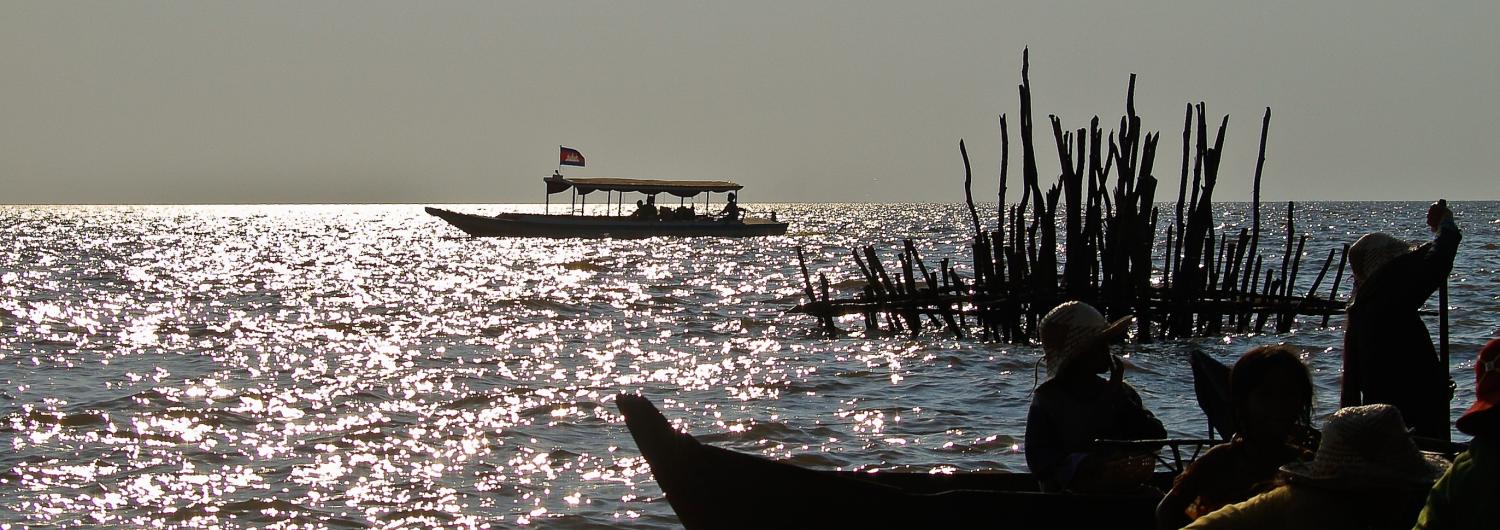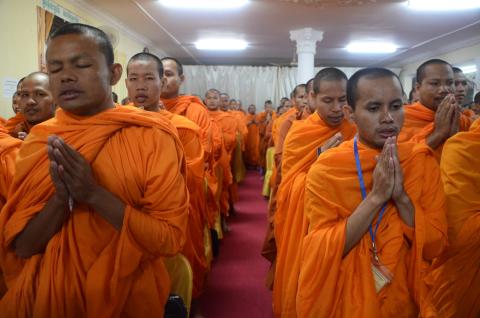Almost exactly 57 years ago, as a junior Australian diplomat, I accompanied a Snowy Mountains Hydro-Electric Scheme engineer to what was then the remote town of Kratie in northeastern Cambodia. His brief was to undertake a preliminary survey of the Sambor region - just to the north of Kratie town - as a possible site for a dam on the Mekong. As contemplated by the UN-sponsored Mekong Committee that had been established three years earlier in 1957, a dam at Sambor had potential to provide electricity to power-poor Cambodia and to improve navigation on the Mekong above Phnom Penh. By the beginning of the following year, a team of Snowy Mountain Scheme engineers was engaged in more detailed surveys of the Sambor site, an undertaking that ended before the mid 1960s.
These events took place in an era of enthusiasm for large dams, a time when decisions were made to build the Aswan High Dam in Egypt and the Kaptai Dam in the Chittagong Hill Tracts in Bangladesh. Consideration of negative consequences resulting from dam construction at Sambor and elsewhere was minimal, not least in relation to the effect of dams on fish catches, even though the importance of the fish harvested from the Mekong in the Cambodian population's diet was widely known.
Fast forward to the last two decades and recognition of the importance of the Mekong's fish stocks has become a key point of difference - and controversy - between supporters of dam-building and their opponents. There are now undisputed figures to the effect that 80% of the Cambodian population's annual consumption of animal protein comes from fish caught in the Mekong and its associated systems, most importantly the Tonle Sap, Cambodia's Great Lake.
What's more, and in one of the most important undertakings of the Mekong River Commission (MRC), we now have a clear idea of where fish spawn and grow to maturity in their various migratory patterns. So far as Sambor as a dam site is concerned, the following assessment was made in 2002 in an MRC Technical paper:
Sambor Dam: located on the mainstream near Kratie, downstream of the 3S rivers confluence [the combined tributaries that flow into the Mekong as a single stream at Stung Treng] the Sambor Dam will block access of migratory fish to 81.3% of the Mekong Basin (potentially impacting on 37% of the Mekong fish biomass) and will alter the sediment flow in sub-basins, which contribute at least 66.2% of the total Lower Mekong Basin sediment load.
In short, it would be difficult to think of a less appropriate site for a dam.
Yet it now appears the Cambodian government is giving serious consideration to building a dam at Sambor, apparently presuming, as has been the case in Laos, that costs to fish catches can be minimised by advanced building techniques - fish passes permitting passages around the dam - while the production of electricity makes any losses in fish harvesting an acceptable price to pay.
The history of developments associated with the possible construction of a dam at Sambor is opaque and the fact that the issue is in the public eye is essentially because of a Facebook post in February of this year by Phay Siphan, a government spokesman, that was picked up by environmental groups and the Cambodia Daily newspaper. According to Siphan's post, the government plans to complete a dam in three stages from 2025 to 2027, with a total output of 1800MW.
The post resulted in other information emerging, including the fact that the Southern China Power Grid, that had signed an MOU with the government to build a dam, had cancelled its plans in 2011, citing concerns about the environmental and population costs. According to this report on the company's change of mind, four inhabited islands would have be submerged were the dam to go ahead, displacing 19,000 people. After protests from villagers, Southern China Power Grid withdrew. 'CSG is a responsible company,' its spokesman said.
Two years later, in 2013, the Cambodia government hired the San Francisco-based National Heritage Institute to study designs for a dam at Sambor. According to a statement posted by NHI, 'The Sambor dam, proposed by the Government of Cambodia, is probably the largest and most destructive dam in the Mekong River Basin.'
NHI reports it 'has now investigated 10 alternative designs to ameliorate the horrific impacts of this dam. These investigations had resulted in NHI suggesting either a much smaller dam on the Mekong's main channel or an even smaller dam on side channels that would leave the mainstream 'free flowing'.
Against this backdrop, there have been a number of news reports that one of Cambodia's most prominent businessmen, Kith Meng, who was partly educated in Australia and reportedly has both Cambodian and Australian citizenship, wants to fund feasibility studies for a dam at Sambor, and two additional dams, one at Stung Treng and another on the Sekong River.
For those with an interest in Australian overseas business ventures, Kith Meng is best known for his Royal Group's 40% stake in ANZ Royal Bank in Cambodia, but ANZ has made it clear that it has no connection with Kith Meng's and his Royal Group's activities in relation to a dam at Sambor, or anywhere else.
As with so much else to do with Cambodian government policies, it may be some time before we get a clearer picture of what might happen in relation to a dam at Sambor. In the form in which it was originally proposed, with a width of 18 kilometres and a dam wall of 56 metres at its highest, there can be little doubting the NHI conclusion that it would be the 'most destructive dam in the Mekong River Basin'. Whether the sort of 'minimalist' plans proposed by NHI might be better is, at best, an open question.
At the same time as proposals for Sambor dam have re-emerged, there have been reports about another major issue relating to the Mekong with the prospect of major environmental risks. In the 1990s, China proposed the Mekong should be cleared of obstacles that prevented regular navigation between southern Yunnan and northern Thailand and, after much controversy, clearance was largely completed between Jing Hong and Chiang Saen. At the time, there were also suggestions there should be further clearing of the river to permit traffic by vessels up to 500 DWT (deadweight tonnage) as far as the old Lao royal capital of Luang Prabang. The size of such an operation appear to have deterred any action being taken. Now the prospect has come back into view, raising concerns about damage to fish stocks.
Whatever happens with this latter proposal and the future developments linked to a dam at Sambor - let alone damage to the Mekong Delta linked to saltwater intrusion - it is sadly clear that the future of the Mekong as the region's lifeblood is at increasing risk.

